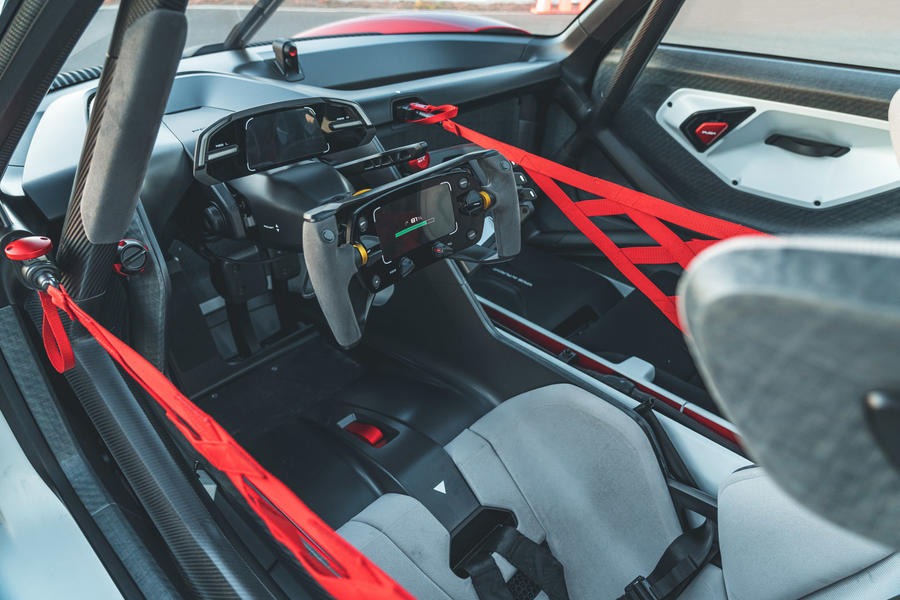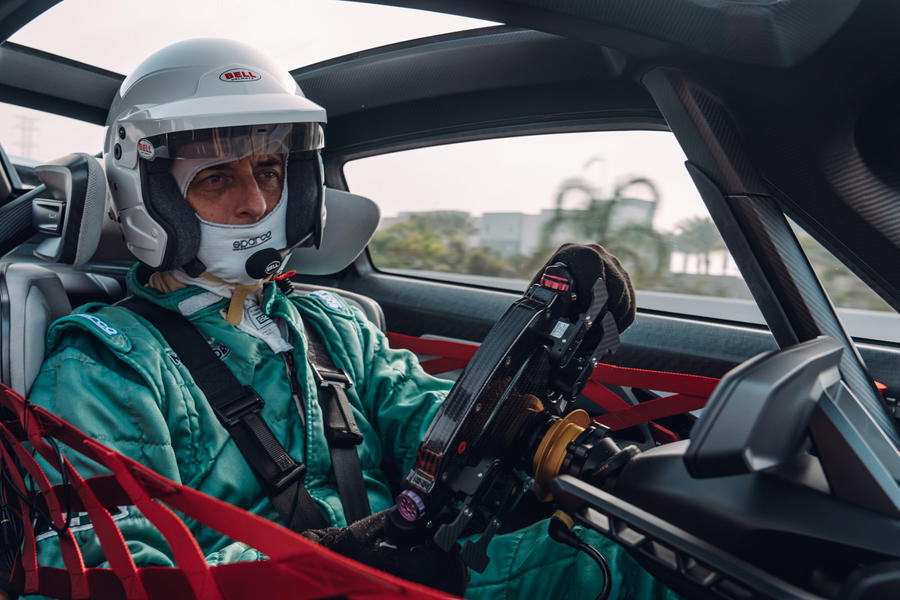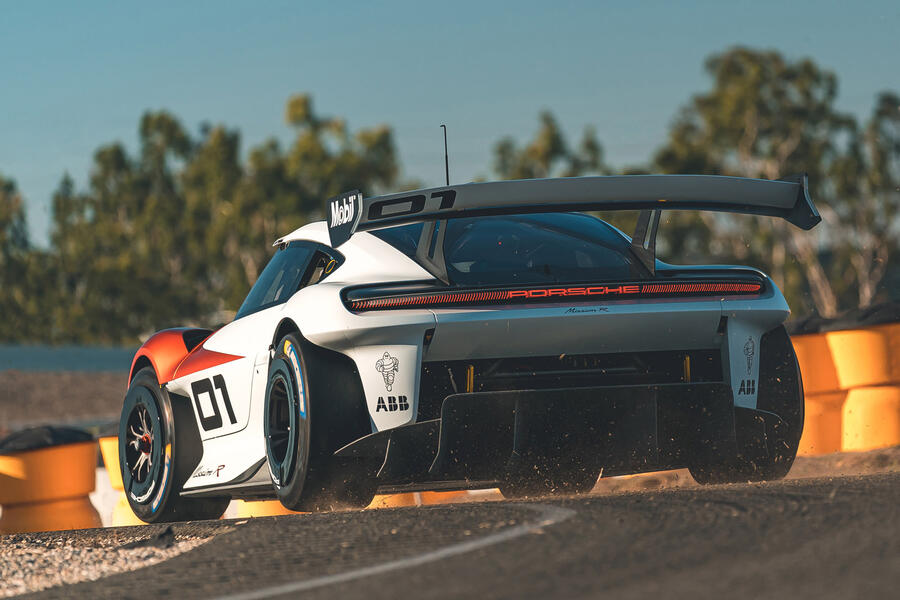Well, this is strange: a race car that comes with its own 45-minute safety briefing, conducted days before you’re to climb aboard. Then, just before you do, there’s another. I could describe it all to you, but the essence is that if all the dashboard lights suddenly turn red, get the hell out.
There’s some advice about how to exit in a hurry while touching either the car or the ground but never both at the same time, but the days of ejecting myself from a car like a champagne cork departing its bottle are probably behind me, if they were ever before me. But there are 900 volts of electricity in here, so I guess it pays to be careful.
‘Here’ is the interior of the Porsche Mission R, and here’s the thing: this is a concept car, the very same one that was on the Porsche stand at the Munich motor show in September. There is another, but it’s a mock-up for show purposes only. In terms of cars that actually work, this is the only Mission R in existence, and there’s no plan to build another.
It has no official value, but unofficially I happen to know it’s valued at €8 million (£6.74m). Yet here I am, clad in fireproof overalls from balaclava to boots, about to take to the track outside Porsche’s Los Angeles Experience Center. And a couple of exploratory laps in the passenger seat have revealed that if you leave the track for any reason, you will crash. There’s no run-off at all...
![]()
But before I fire it up, let’s just briefly remind ourselves what it is, why it was built and what if anything we can read into its existence. For one thing we know about Porsche is that it never ever does a concept car without a broader purpose in mind. In this case, it’s the company’s first electric sports car.
The start point was a 718 Cayman, but by the time the team was finished nine months later, only small parts of the centre section remained; the rest is bespoke. I had hoped that the car would actually be based on the platform of the next Cayman, due in 2023 or 2024, but no such luck.


















































Join the debate
Add your comment
I'm always disappointed that Autocar Luddism taints these kinds of test opportunities. Why doesn't Porsche get some real car enthusiasts in to test drive this car, instead of the dinosaurs, sorry, I mean automotive journalists. When the Model T Ford was launched, today's automotive journalists were the kind of people who were stood at the back, saying that they preferred their horse and cart. Back in the 21st Century, this car is awesome and I can't wait to see a road-going version. In fact, I'm already planning the finance.
Sooooo glad I got to drive in-line 4 & 6 and V8s and V12 engined proper racing cars. DFVs, Lamborghini, Hart (na and Turbo) and BMW. Call me a dinosaur but the future looks crxp to me.
Oh yes, forgot the 10 cylinder Viper! Hot as hell......
I hear you john, I drove a Taycan turbo S over 6 months ago and never once for one moment have I thought about buying one. Now the GT4 I sold, I miss that big time! But lets be honest the Model T was probably cr#p to drive but look where we got to?
Porsche will martin, and sooner than you might think, like 2025!
I agree 100% Martin